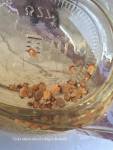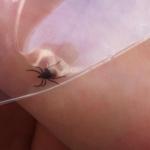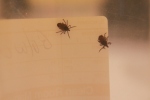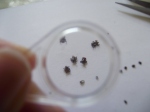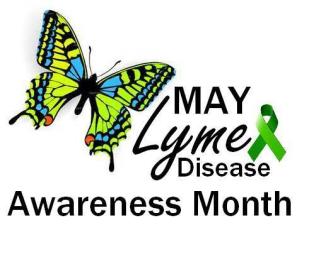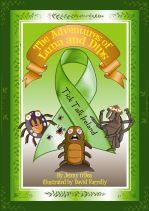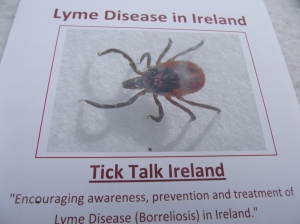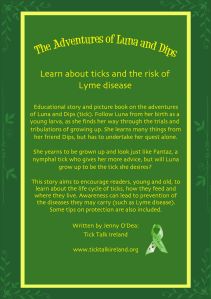Lyme Disease has been stuck in stale mate for many years. Chronic Lyme denialists often go head to head with chronic Lyme sufferers & decisions over length & type of treatment becomes an issue for many. As covered in our latest blog post the struggle of Lyme patients has been likened to the AIDS movement.
It’s very promising that due to much hard work & perseverence of Lyme communities around the world (with the help of philanthropists too), we may actually be getting somewhere!
Recent Advances:
Stand4Lyme Foundation has partnered with the Stanford School of Medicine’s Lyme Disease Working Group (SLWG), which includes collaboration with Harvard, Johns Hopkins and Columbia. Through research they hope to improve testing & treatment for Lyme disease patients with a bid to ‘Making Lyme History’
More details at:
http://www.prnewswire.com/news-releases/stand4lyme-partners-with-stanford-scientists-making-lyme-history-300257251.html
or check out this 20 minute video for more information
Researchers investigate four promising new treatments for Lyme disease
March 29, 2016 by Thea Singer
When Northeastern researchers reported last May how the bacterium that causes the disease evades antibiotics, suggesting new treatments, the media and the general public took notice.
University Distinguished Professor Kim Lewis, who leads the Lyme disease research team, is now expanding that therapeutic reach with the help of a $1.5 million grant from the Steven and Alexandra Cohen Foundation.
The team is pursuing four arms of treatment-related research at Northeastern’s Antimicrobial Discovery Center, which Lewis directs.
More on the article available at:
http://www.northeastern.edu/news/2016/03/researchers-investigate-four-promising-new-treatments-for-lyme-disease/
Utah drug research company, Curza, takes aim at Lyme disease
By Chris Miller Wednesday, August 26th 2015
(KUTV) Curza, a Provo-based pharmaceutical research company, is on the cusp of a medical breakthrough that could treat victims of chronic Lyme disease.
The company is entering phase two of clinical research on their newly designed antibiotic called CZ-99. They’ll soon be testing the drug on infected mice at the University of California, Davis.
An initial clinical trial at the University of New Haven in Connecticut, found CZ-99 to be 60 percent more effective in treating Lyme disease than the traditional antibiotics used to treat the illness.
Curza CEO Ryan Davies says they have a patent on a technology used to penetrate bacteria’s protective outer layer, or biofilm, making its new antibiotic more effective than outdated medications.
More at: http://kutv.com/news/local/utah-drug-research-company-curza-takes-aim-at-lyme-disease
The Connecticut Department of Health has granted the Ridgefield Health Department $100,000 for the 2015-16 fiscal year and $225,000 for the 2016-17 year for education efforts based on its BLAST Lyme program.
My Lyme Data – new project by US based Lyme Disease Association will be following chronically sick patients long term to assess their response to treatment. https://www.lymedisease.org/mylymedata/
UK scientist speaks out about chronic Lyme disease & problems with testing
http://www.dailymail.co.uk/health/article-3563844/Lyme-disease-ticking-time-bomb-Leading-expert-explains-life-wrecking-illness-spreading-protect-yourself.htm
Sadly we have news too of a recent death of a businesswoman who became very ill after contracting Lyme disease https://www.timesoftunbridgewells.co.uk/popular-businesswoman-loses-her-fight-against-lyme-disease/
Loads of info on chronic lyme available here
Scientists Thinking outside the box:
Treating early Lyme with Cimetidine: http://www.medical-hypotheses.com/article/S0306-9877%2816%2930007-X/abstract
Treating Lyme with Claritin: http://www.pharmacytimes.com/news/could-claritin-cure-lyme-disease
Using Cancer Drugs: Mitomycin C, completely eradicated cultures of the Lyme bacterium [inc persisters] in one fell swoop. Lewis stressed that, given Mitomycin C’s toxicity, it isn’t recommended for treating Lyme disease, though his team’s findings are useful to helping to better understand the disease. https://www.sciencedaily.com/releases/2015/06/150601112236.htm
Our latest blog post covers various scientists at the cutting edge of discovery (see bottom of post)
New charities in the UK:
Lyme Aid UK: http://www.lymeaiduk.com/
Vis-a-Vis Symposiums: http://www.visavissymposiums.org/
VIRAS: http://www.counsellingme.com/VIRAS/VIRAS.html
Caudwell Lyme Charity: https://caudwell-lyme.net/about/
Newly added Sep 2016: About Time for Lyme: http://www.abouttimeforlyme.com/
Newsletters:
Lyme Disease Action: http://www.lymediseaseaction.org.uk/what-we-are-doing/newsletters/
Lyme Discussion UK: http://lymediseaseuk.com/tag/lduk-newsletter/
Development of UK guidelines:
LDA: http://www.lymediseaseaction.org.uk/resources/guidelines/nice-guideline/
LDUK: http://lymediseaseuk.com/2016/02/24/nice-lyme-disease-guidelines-stakeholder-workshop/
VIRAS: http://counsellingme.com/VIRAS/VIRAS.html
So why do guidelines matter? Well for years health authorities worldwide sided with Infectious Disease Society of America (IDSA), endorsed by the US Centre of Disease Control (CDC) these guidelines are no longer in the Guideline Clearance House due to being outdated & new guidelines are not expected for another 2-5 years. The IDSA guidelines were subject to a Lyme hearing & attracted much controversy. Doctors are discouraged to use International Lyme & Associated Disease Society (ILADS) guidelines despite being updated & current in the Guidelines Clearing House.
Some states in the USA have passed legislation to allow doctors to treat openly using whichever guideline they prefer:
As can be seen by this article CDC/IDSA guidelines can fail patients http://www.huffingtonpost.com/dana-parish/where-cdc-guidelines-fail-leading-lyme-doctor-succeeds-part-1_b_9318660.html
It’s interesting that doctors themselves can even find getting tested & treated adequately is problematic, celebrities & entrepreneurs too, so it’s easy to see that no matter what you’re background is, or however hard you’ve worked all your life you could be hit too.
Advances in testing:
Univ Vienna: https://www.sciencedaily.com/releases/2016/04/160425095342.htm
Hilysens II: http://hilysensproject.eu/index.php
Jenna, 2 new tests: http://jennaslymeblog.com/two-new-lyme-tests/
Recently there was a book called ‘It’s All in Your Head’ by Suzanne O’Sullivan, the subject being Imaginary Illness. Sadly Lyme disease (in particular chronic Lyme) is considered an Imaginary Illness by many. Why? Because antibody testing can miss some cases – due to no infection being found it’s considered that patients may be attention seeking or depressed. We can see from our ongoing surveys that those diagnosed with depression/psychiatric illness had gone up from 7 to 14 people between 2011 & 2012. This is a worrying trend. We have news that Simon Wessley (the psychiatrist at the heart of many a debate on ME/CFS) is being invited to take part in shaping Lyme disease guidelines. The aim is to ‘disengage’ patients with unproven Lyme disease. However we know that no test at the moment is sensitive enough to ‘disprove’ a Lyme diagnosis.
NB: We cover testing in great detail in our web site looking at various pitfalls that arise when looking for a Lyme infection. For a more summarised view check out our article called ‘Issues Surrounding Testing‘ (PDF).
Surveys:
Tick Talk has rolling surveys with 2016 results due to be published soon. To view the latest results (currently up to May 2014), head on down to http://www.ticktalkireland.org/surveys.html
Want to learn more about Lyme disease? Check out our extensive links section for more… https://ticktalkireland.wordpress.com/lyme-links/
Lyme Awareness Week: I leave you with notice that Ireland’s Health Protection & Surveillance Centre are planning to kick off Lyme awareness week from beg of 2nd May 2016. This is an annual event where newspapers warn the public about Lyme prevention. Sadly chronic illness is seldom covered but due to the fact that Lyme is much more successfully treated if caught early, it will hopefully prevent a more insidious disease creeping in.
For articles related to Ireland check out the following sections:
Irish studies: https://ticktalkireland.wordpress.com/irish-related-studies/
Irish news: https://ticktalkireland.wordpress.com/lyme-links/irish-related-articles/
Irish radio: https://ticktalkireland.wordpress.com/lyme-links/lyme-on-radio/
Lyme Prevention Book
Check out Tick Talk Ireland’s Lyme Prevention Book – ‘The Adventures of Luna & Dips’ (tick). Nicely illustrated & all proceeds go towards keeping our websites functioning. Available worldwide & able to be viewed on various devices using an amazon app..
NB: now only available via scribd from Sep 2018 at:
https://www.scribd.com/doc/138970319/Adventures-of-Luna-Dips
Take care this Spring & Summer 🙂
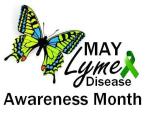

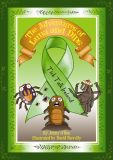



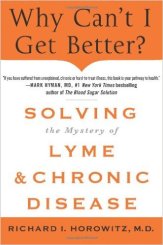 As Dr Horowitz says in his
As Dr Horowitz says in his 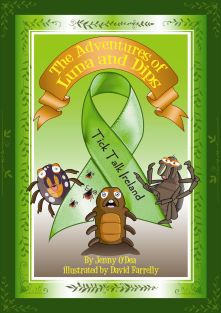
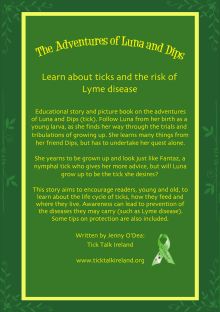

 72 out of our 104 respondents have been ill for more than a year in TOTAL including pre & post treatment which is an alarming 69%. Nearly a QUARTER of these patients have been ill for 10 years or longer. This supports the claim that Lyme MUST be treated quickly to avoid chronic and persistent infection.
72 out of our 104 respondents have been ill for more than a year in TOTAL including pre & post treatment which is an alarming 69%. Nearly a QUARTER of these patients have been ill for 10 years or longer. This supports the claim that Lyme MUST be treated quickly to avoid chronic and persistent infection.
